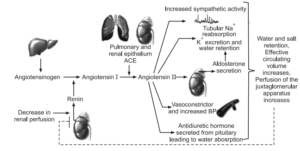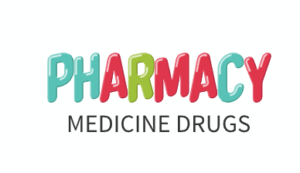Symptoms High blood pressure (BP) | Hypertension
High blood pressure usually causes no symptoms and high blood pressure often is labelled “the silent killer”. People who have high blood pressure typically do not know it until their blood pressure is measured. Sometimes people with markedly elevated blood pressure may develop Symptoms of hypertension
- Headache
- Dizziness
- Blurred vision
- Nausea and vomiting
- Chest pain and shortness of breath.
People often do not seek medical care until they have symptoms arising from the
organ damage caused by chronic (ongoing, long-term) high blood pressure. The
following types of organ damage are commonly seen in chronic high blood pressure:
- Heart attack.
- Heart failure.
- Stroke or transient ischemic attack(TIA).
- Kidney failure.
- Eye damage with progressive vision loss.
- Peripheral arterial disease causing leg pain with walking (claudication).
- Outpouchings of the aorta, called Aneurysms. About 1% of people with high blood pressure do not seek medical care until the high blood pressure is very severe, a condition known as malignant hypertension.
- In malignant hypertension, the diastolic blood pressure (the lower number) often exceeds 140 mm Hg.
- Malignant hypertension may be associated with headache, lightheadedness, nausea, vomiting, and stroke like symptoms.
- Malignant hypertension requires emergency intervention and lowering of
blood pressure to prevent brain hemorrhage or stroke. It is of extreme importance to realize that high blood pressure can be unrecognized for years, causing no symptoms but causing progressive damage to the heart, other organs, and blood vessels.
Diagnosis High blood pressure (BP) | Hypertension
High blood pressure is diagnosed based on the results of a blood pressure test. The test yields two numbers: systolic and diastolic. Blood pressure values are often
written as systolic pressure/diastolic pressure; for example, 120/80. The unit of
measurement for blood pressure is millimetres of mercury (mmHg).
Blood Pressure Categories in Adults: The National Heart, Lung and Blood Institute divide blood pressure levels into several categories. Below are the values that
define each of these categories in adults.
Normal: Systolic pressure, less than 120 mmHg and Diastolic pressure, less than 80 mmHg.
Prehypertension: Systolic pressure, 120-139 mmHg or Diastolic pressure, 80-89 mmHg.
- Stage 1 high blood pressure: Systolic pressure, 140-159 mmHg or Diastolic pressure, 90-99 mmHg.
- Stage 2 high blood pressure: Systolic pressure, 160 mmHg and above or Diastolic pressure, 100 mmHg and above. When systolic and diastolic pressures fall into different categories, the higher one is used. For example, a blood pressure reading of 165/85 is considered stage 2 high blood pressure.
- Isolated systolic hypertension: It refers to high blood pressure in which only the
systolic number is high. It occurs in about two-thirds of people over ages 60 who have high blood pressure. This condition should be taken as seriously as high blood pressure in which both values are elevated, because it can cause just as much harm if left
untreated. - Diagnosis in Children and Teens: Blood pressure is measured the same way in children and teens as it is in adults. However, the younger and smaller the child, the lower the values normally are. To diagnose high blood pressure, the blood pressure values for a particular child or teen are compared to average blood pressure readings for young people of the same age, gender and height. Following points are also taken into consideration in diagnosis:
- Medical and family history
- Physical examination
- Ophthalmoscopy
- Chest-X-ray
- Electrocardiograph
- Blood and urine tests
Treatment High blood pressure (BP) | Hypertension
There is no cure for primary hypertension but blood pressure can almost always be lowered with the correct treatment. The goal of treatment is to lower blood pressure to levels that will prevent heart disease and other complications of hypertension. In secondary hypertension, the disease that is responsible for the hypertension is treated in addition to the hypertension itself. Successful treatment of the underlying disorder may cure the secondary hypertension. Antihypertensive medicines fall into several classes of drugs (see diagram below)
Prevention High blood pressure (BP) | Hypertension
Having high blood pressure can be prevented by eating healthily, maintaining a healthy weight, taking regular exercise, drinking alcohol in moderation and not smoking, reducing salt intake, managing stress.
